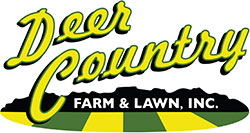Fall Lawn Maintenance Tips
Fall Lawn Maintenance Tips
As the hot days and warm nights of summer begin to fade and the cool, crisp air of autumn takes over. It's now time to shift our attention to fall lawn maintenance. Proper care during this season sets the stage for a lush and healthy lawn come springtime. Fall presents a unique opportunity to address your lawn's needs and ensure its resilience through the harsh winter months. Let’s explore some steps & tips for fall lawn maintenance that will leave your yard ready to impress come springtime.
Mowing Tips
As the days get shorter and temperatures drop, your grass will grow more slowly. Adjust your mower's cutting height to leave your grass slightly taller than usual in the beginning weeks of autumn. This helps the grass capture more sunlight and maintain better root health. Also, avoid cutting your grass too short in those weeks. Scalping the lawn can expose the soil to colder temperatures and increase the risk of winter damage. Maintain a recommended mowing height for your specific grass type. Mow your lawn when it's dry. Wet grass can clump together and result in an uneven cut. Mowing dry grass ensures a cleaner and more even cut. Finally, towards the end of fall give your lawn a slightly shorter final mow. This can help prevent snow mold and other fungal issues during winter. That said, pay attention and be sure to avoid cutting too short for your specific grass species.
Leaf & Debris Removal
One of the first tasks in fall lawn maintenance is clearing away fallen leaves and debris from your lawn. While leaves might be the picturesque look of autumn on the ground, they can smother your grass, inhibiting growth and potentially leading to diseases that can damage and destroy your lawn. Regular raking, bagging with a lawn mower or using a mulching mower to break down leaves can help maintain the health of your lawn.
Aeration & Irrigation
Compacted soil can prevent water and nutrient absorption, affecting the overall health of your lawn. Aerating your lawn, which involves perforating the soil with small holes or slits, allows air, water, and nutrients to penetrate the root zone more effectively. Fall is an ideal time for aeration as the grass can recover and fill in any open areas before the deep winter freeze. Hand in hand with Aeration it's essential to keep an eye on your lawn's moisture levels. While the fall weather typically brings more rainfall, proper hydration helps your grass absorb nutrients and promotes root growth. Water your lawn early in the day to minimize the risk of disease and allow the grass to dry before evening temperatures drop.
Overseeding
Overseeding is the practice of sowing/planting grass seed over existing turf to fill in thin or bare patches. Fall's cooler temperatures and increased moisture, especially in the morning, creates excellent conditions for grass seed germination and establishment before winter. Choosing the right seed mix for your region and lawn type to ensure the best results. Use a spreader to evenly distribute the grass seed over the entire lawn area. Pay extra attention to thin or bare spots. Be sure to follow the recommended seeding rate provided on the seed packaging. Avoid applying too much seed in one area, as this can lead to overcrowding and poor growth.
Fertilization & Weed Control
Applying a balanced, slow-release fertilizer in the fall provides essential nutrients to your lawn during its active growth phase before winter dormancy. This nourishment supports root development and helps the grass store energy for the upcoming colder months. When selecting a fertilizer for fall application, look for one with a higher ratio of nitrogen and lower amounts of phosphorus and potassium. Nitrogen promotes healthy blade growth, which is beneficial for fall recovery and spring regrowth. The best time to apply fertilizer is typically in the early to mid-fall, when the grass is still actively growing, but temperatures have cooled down. This period allows the grass to absorb and store essential nutrients for winter survival. Aim for a window that's about 4 to 6 weeks before the first expected frost in your region. In conjunction with applying lawn fertilizer fall is an excellent time to tackle persistent weeds. Weeds are often in a vulnerable state as they prepare for winter, making them more susceptible to herbicides and treatments. Spot-treat problem areas to prevent these intruders from taking over your lawn come spring. Be sure to do your research and select the correct herbicides for the weeds you plan to tackle and your specific situations. Fall lawn maintenance is not just about tidying up from the busy months of summer, it's also a critical step in ensuring your yard's vitality and resilience through the coming winter months. By following these tips and recommendations from raking leaves to overseeding and fertilization you'll set the foundation for a lush and vibrant lawn that will not only withstand the cold winter but also flourishes when the warmth of spring returns.


